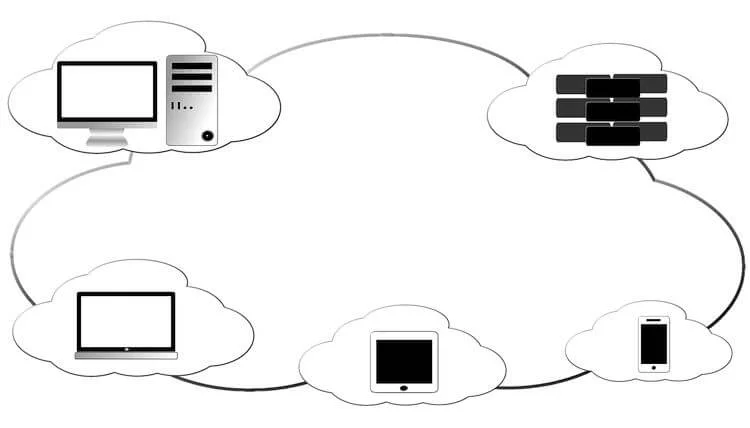What is the Difference Between Cloud Hosting and Cloud Computing SaaS?

Updated April 20, 2018
Read on for a brief, simple, explanation of the differences between cloud hosting, cloud computing and Software as a Service (SaaS). Find out how these three fit together and how they are similar yet different in a few minute read of this blog post.
Looking for Shared Cloud? – Get 5GB SSD on Shared Cloud with KnownHost, from $3 a Month Here!
What is Cloud?
The term ‘cloud’ simply refers to a distribution of resources. There can be ‘cloud’ anything – so long as the resources are spread amongst multiple locations, devices, servers, teams of staff, and so on. In the most abstract, it simply means distributed pooled resources.
What is Cloud Hosting?
The phrase ‘cloud hosting’ is used to describe a pool of website servers, generally spread across multiple racks, server farms, cities and even countries. It can exist in a single rack of servers just as it can exist in a massive pool of servers spread across many datacenters and time zones.

In reality, it’ss nothing more than a combination of servers that have jointly pooled their resources so that hosting clients can serve up their websites to their intended audience, usually the buying public at large.
What is Cloud Computing / SaaS?
Cloud Computing is an application that runs across a server cloud. This isn’t the low level hosting of files and databases, but rather is a specific instance of an application running across the hosting platform. It’s the distribution, internet accessibility and remote hosting that forms these key components of Cloud Computing.
What is SaaS?
SaaS is generally thought of as just the internet enabling of an application, so that end users can access from around the web AND without having to host the application themselves. It’s a distributed delivery approach for a software application. However, SaaS is also much more. It’s not just a pool of resources. It’s not just an application on the web. It’s all the administrative facility, like billing and management, that goes into offering an application across a distributed network.

Tieing Them All Together
Cloud Hosting is the pooling of web server resources. Cloud Computing sits on top of that, providing an application layer. SaaS gives a model for licensing, billing and other administrative needs, to the Cloud Computing layer.

Key Specifications
If you’re looking for a solution, there’s a lot of things that go into the decision – including whether or not it’s managed, where the cloud is physically located and how much it costs, to mention just a few.
When you look at the KVM cloud VPS solution physical hardware specifications, there are a few essentials:
- vCPU Cores – some sites only need one – others need several – it pays to know your needs or speak to someone who can help figure that out
- Guaranteed RAM – could be you need 2GB, 4GB, 6GB, or more
- Cloud Storage – you’ve got have space for your application, files, images, videos
- Transfer – how much bandwidth you’ll use in a month
- IP Addresses – will you have enough for www and email (great to put on separate IP’s)
If you need a cloud solution with a bit less horsepower, and expense, have a look at KnownHost web cloud hosting plans, starting at just $3.47.
What Is Cloud-based Hosting? Definition & Benefits - KnownHost
April 22, 2024 at 6:55 am[…] Cloud hosting has a few technical differences from cloud computing. For more information about the differences between the two, read our comparative guide on cloud hosting and cloud computing SAAS. […]